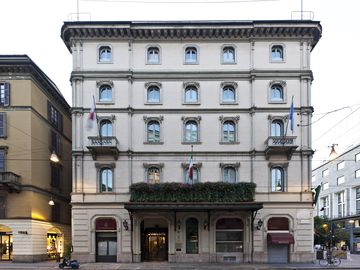

Built in the neo-gothic style in the 1850s by architect Andrea Pizzala and opened in 1863, the Grand Hotel et de Milan, with about two hundred rooms, was the most luxurious hotel in the city. It was also the first to offer its clients a telegraph and postal service. In 1872 it became the most popular building in Milan when composer Giuseppe Verdi made it his permanent residence while he collaborated with the La Scala Opera House just half a kilometer away. Verdi was not only the most admired Italian composer at the time, he had also been a strong advocate of Italian Unification. In fact, his surname was used as an acronym for the independence movement: Vittorio Emanuele Re Di Italia, meaning Victor Immanuel King Of Italy. Although the Kingdom of Italy had officially been created in 1861, it completed its unification process only in 1870 with the annexation of Rome, which became its capital a year later.
In 1902 legendary Neapolitan tenor Enrico Caruso, who was also performing at La Scala, stayed in the hotel. Not only did he stay there, he also recorded - in his apartment - the first flat LP in the history of music for Fred Gaisberg's Gramophone Company. The record consisted of ten arias and became an engineering breakthrough in the world of music.
In 1931 the hotel was restructured and enlarged, and every room was given a telephone and running water. During World War II the building's fourth floor suffered heavily from the bombing, and the entire structure underwent thorough restoration work. In the 60s and 70s it was popular among international movie stars, famous fashion designers and the all-invasive but indispensable paparazzi. Just about everyone who was anyone stayed at the hotel. Its final renovation was carried out in the 1990s when part of a 3rd-century defense wall was discovered and employed as a stylistic element in the hotel's Don Carlos restaurant.